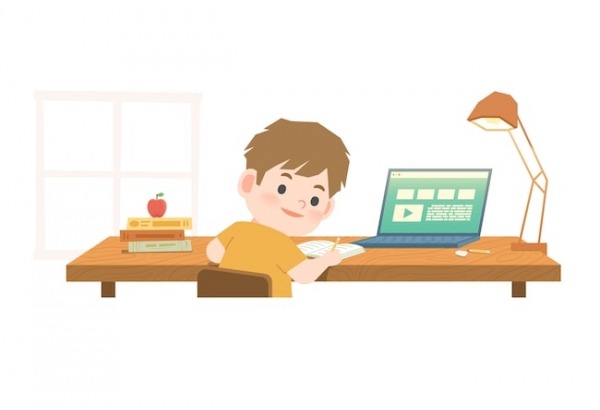3 Dyslexia programs for adults

Dyslexia is a specific learning difference that can affect literacy skills in children and adults. This is because it makes it harder to break language down into its component sounds, which complicates the process of sounding words out and spelling them. It’s helpful not to think of dyslexia as an illness or a disability – despite it being called that in some countries - it’s just a different way of processing in the brain that can also affect memory and organizational skills.
And while dyslexia can make some activities more challenging, such as reading and writing, dyslexic adults may also excel in other areas such as problem solving and creative pursuits. With the right support, including strategy training and accommodations in the classroom or workplace, every individual can achieve his or her full potential. That’s why it’s so important for adults with dyslexia to learn more about their options when it comes to choosing a literacy program, a trained tutor and/or the tools that can best support them.
Testing for learning differences in adults
Which programs you decide on, if you choose to hire a private tutor, and the tools you use will depend to some extent on the severity of your dyslexia, how it affected you in your early schooling, how it has impacted your adult life, and what you are able to commit to both time wise and financially.
First off, is your dyslexia diagnosed or do you only suspect you are dyslexic? If the latter is true, you may also want to take an online screening test for adults and depending on the results, see a specialist for an assessment. The reason for this is a comprehensive diagnostic assessment will tell you more about your strengths and weaknesses, so you fully understand what you need out of a literacy program.
If you’re considering getting tested, a typical assessment lasts several hours and will include a battery of different tests that look at your ability to manipulate language and perform cognitive tasks. A follow up report will include recommendations for reading and spelling strategies that can help, such as using a computer to touch-type vs. writing by hand or taking a course on English phonics. Moreover, a specialist can issue you documentation that serves as an official diagnosis, which may be useful in securing access to accommodations in your workplace or at school.
Learn more in Is dyslexia a disability? Dyslexia in the workplace, Testing for dyslexia, Accommodations for dyslexia
Recognizing the signs of dyslexia
Everyone with dyslexia is different. Some individuals will have difficulty with reading out loud, whereas others will lose their place on the page. A dyslexic reader may find they need to read the same paragraph several times in order to understand it, or that reading generally takes longer and is a frustrating and exhausting activity, instead of an enjoyable one. They may be able to spell out the individual words in a sentence but be unable to read them for meaning.
Adults with dyslexia often struggle with spelling. They may lack a gut sense of whether or not a word is spelled correctly and be unable to proofread their own work for typos.
Spelling can be inconsistent and high frequency words can be some of the most problematic terms for an adult learner to get right. Spelling errors may include mixing up the order of the letters in a word, adding a letter, or leaving one out. Writing may be somewhat disorganized and dyslexic individuals can take a lot longer than their peers to produce the same amount of text.
In certain cases, writing by hand may also be particularly difficult, especially if the dyslexia co-presents with dyspraxia or dysgraphia. If you think you are dyslexic, you may be interested in reading Am I dyslexic?
Why seek out support?
Specific learning difficulties like dyslexia can cause an individual to fall behind and may result in feelings of low confidence and poor self-esteem, particularly if the dyslexia goes undiagnosed. An otherwise bright person whose work does not reflect his or her intelligence may be called “lazy” or told they are “not trying hard enough,” which can further damage self-worth and lead to negative associations with work or school. The reality is that many dyslexic adults can work twice as hard as their peers, and some still may not achieve the same results without access to appropriate accommodations.
If the dyslexia is mild, an individual will likely have developed some coping strategies. The problem is these may not always work and can become less effective due to a new job post or going back to school. It may also be that career development is halted because of the difficulties posed by a particular written test or certification needed for advancement. Learn more about mild dyslexia in this article. In severe cases, an adult may even have chosen to leave school early. But it's never too late to turn things around.

What we mean by "program"
You want a program to be useful in helping you overcome difficulties, develop your skills and/or learn in a dyslexia-friendly way. A good program should also set you up for success, so you rebuild your confidence gradually through practice. The first thing to consider is there are many ways to define the term program. It could be a computer program that also takes the form of an app, or a program could mean a system of lessons that follow a particular method. In some cases, it may be a program of teaching that someone is trained to deliver.
Multi-sensory programs
Orton-Gillingham is an approach that was developed in the 1930s to help dyslexic learners improve their reading and spelling skills. It combines multi-sensory learning techniques with a structured and sequential review of English phonemes (sounds) and can be seen as an overarching umbrella approach under which many different methods and systems fall. Learn more about Orton-Gillingham.
TOP TIP: Multi-sensory learning means you hear, see, and move your body in some way to reinforce your learning. This final type of sensory input is called kinesthetic learning. Learn more about a multi-sensory approach to reading?
- The Barton Program
This program aims to change the way someone with dyslexia approaches reading. It’s a teaching program that both professional and informal literacy tutors may be trained in and it is based on the Orton-Gillingham approach. This means there is a review of phonics, or the basic sounds of English, and how they are represented by letters. An understanding of phonics helps you read because it allows you to decode words.
The Barton program also places emphasis on teaching vocabulary and how to recognize Latin roots, which may help with extracting meaning in reading. The method includes instruction in spelling rules as well. While it’s popular among home-schoolers, Barton can also be used to help adults read. It’s an intensive program with 10 levels, 18 steps per level and an assessment at the end of each.
- The Wilson Reading System
This program, also based on Orton-Gillingham, is often used to teach adolescents but may be appropriate for adult learners as well. It’s multi-sensory and combines audio, visual and tactile learning techniques in sessions that reinforce reading and spelling skills. You may recognize it by the sound-tapping that students using the program do. This is to help them identify the sounds that make up the words they read and bring a tactile element to the process.
The Wilson Reading System is popular among private tutors who can obtain a certification in teaching it. A key feature is the materials students read tend to be of interest to older learners and vocabulary and text complexity increase as skills develop. It also allows teachers to customize their lessons, though a session must cover ten different skill areas (vs. spacing these skills out so only one is practiced per lesson). It takes 2-3 years to complete the program.
- The Davis Program
This program is based on the book The Gift of Dyslexia written by Ron Davis, a dyslexic adult who taught himself how to read. The activities and approaches were tested with adult learners and many of the methods work well for individuals with autism as well. Activities are designed to help an adult discover what he or she is good at, and then harnesses this motivation for learning. The book aims to give adults autonomy in learning and provide them with the strategies they need to control the cognitive processes involved in reading.
It is multi-sensory and can be taught by a tutor working 1:1 with a student. Nonetheless, an adult with dyslexia can also read the book and undertake some of the techniques on his or her own. Before deciding on a literacy program, consider your goals, including what you’d like to get out of it and if they are realistic based on how you plan to use it. If you’re signing up for a rigorous system that provides benefits only after long-term use, be aware of that and adjust your expectations accordingly. Get more information on finding a private tutor who specializes in working with adult learners.

5 Computer programs and apps for dyslexia
For some adults, particularly individuals with busy schedules, it's important to find a self-study computer program or app that makes reading, writing and/or spelling easier on a daily basis.
Ghotit
This is a spellchecker for people with dyslexia. It will help by reading entries out loud. It’s also better able to guess at the word you intended to write than an average spell-checker. It provides guidance on word spelling, punctuation and even grammar, plus it includes a dictionary. This is an ideal tool for working adults.
Notes.io
It’s often suggested that individuals with dyslexia use a computer to reduce the cognitive processing burden in writing and allow them to focus more on ideas. This is particularly important when it comes to note-taking. Notes.io is a simple dyslexia-friendly program that allows you to take notes online, save them and then share them with others as a web address. A dyslexic learner might want to do this to get feedback from teachers and ensure the notes are accurate. An adult can use the program to send notes to colleagues for review or to copy and paste and use in reports.
TOP TIP: In order to use a computer more effectively and efficiently, it’s recommended that dyslexic adults learn to touch-type. This is because typing encodes word spelling as a series of muscle movements, and makes writing easier and faster so the ideas flow through the fingertips and onto the screen. Learn more about the benefits of touch-typing for dyslexia.
TTRS
Touch-type Read and Spell is a typing program designed for dyslexic learners which aims to improve reading, writing, spelling and self-esteem. Users learn to type in a multi-sensory way that reinforces phonics and builds confidence. It is perfect for adults and can also be used for children. This makes it a great program for families where more than one individual has dyslexia. Early emphasis is on accuracy but you can work on speed whenever you feel ready. Adult users report improved reading and spelling ability in addition to learning a new skill that they can put on their resumes.
CogniFit
This program is a learning game designed to strengthen your brain and help with memory and concentration too. It works by activating and strengthening neural connections and can be useful as a sort of pre-workout warm-up exercise before you go into a lesson, start to read, or take a test. The program begins with an assessment so it adapts to your particular needs and is appropriate for all ages.
Leo - Recorder & Transcription
This app is a recorder with a transcription function that saves your transcripts by calendar date, so they’re easy to find and access when you need them. It’s simple, easy to use and saves you the step of writing something down. This is an excellent tool for a working adult to have on hand.
Keep in mind there are plenty of low and high tech options to help with literacy skills. For example, grips on pens and pencils can make it easier to write by hand and a reading guide, such as a ruler that you slide down the page, can help you keep your place. You might also try audio books for reading on a smartphone with text-to-speech software for writing.
Evaluating a tool
- Is it easy to begin using? How hard is it to learn?
- Does it take a multi-sensory approach? How does it work?
- Will it provide opportunities for repetition and can you go at your own pace?
- What feedback is provided by the program? Is it adaptive?
- Which skills does it enhance? Will it help you read and spell?
- Does the program help with literacy skills and memory/processing?
- How often do you need to use it for the program to be effective?
- Can you integrate it into your day-to-day routine? How convenient is it?
- Is it made for adults with dyslexia? Are there any testimonials from adult users who have found it effective?
Note TTRS does not endorse any one tool or approach covered in this article. This blog simply aims to provide an overview of the different options available.
For adult learners
TTRS is a program designed to get adults with learning difficulties touch-typing, with additional support for reading and spelling.
Chris Freeman
TTRS has a solution for you
An award-winning, multi-sensory course that teaches typing, reading and spelling

How does TTRS work?
Developed in line with language and education research
Teaches typing using a multi-sensory approach
The course is modular in design and easy to navigate
Includes school and personal interest subjects
Positive feedback and positive reinforcement
Reporting features help you monitor usage and progress













